Anywhere that groundnuts are cultivated, they are susceptible to pests and diseases that cause a decrease in yield and quality as well as an increase in the cost of production. On groundnuts, a significant variety of pathogens, including fungi, viruses, nematodes, and bacteria, have been documented. Although the vast majority of them are common, only a select minority of them have significant economic significance on a local level. 2 Major Field Pests:
- Groundnuts Aphids
These propagate the groundnut rosette disease, which can inflict up to 100 percent damage in extreme circumstances. Additionally, thrips, potato leaf hoppers, and bollworms damage groundnuts and can be managed similarly to aphids. The sprays should be directed at the plant's base.
- Leaf miner
Groundnut leaf miner is a severe pest of groundnuts that attacks throughout both the wet and post-rainy seasons. It is regarded as the greatest pest danger to groundnut output whenever outbreaks occur. It is more destructive when a lengthy drought precedes a brief wet cycle. The larvae of leaf miners mine the leaves and feed within the leaflets. On the underside of the leaves of peanut, soybean, and other leguminous plants, eggs are laid singly. Damaged leaves turn discolored, curled, and dissected, resulting in defoliation and affecting the crop's growth and output. 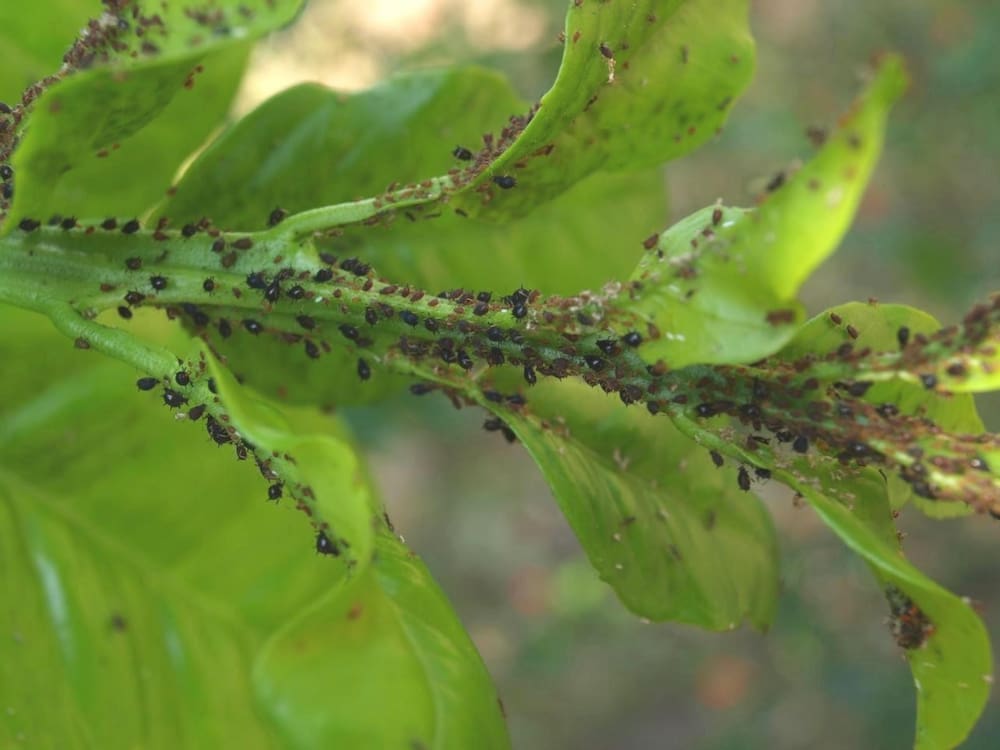 2 Major Storage Pests:
2 Major Storage Pests:
- Peanut bruchid beetle.
A significant pest of stored groundnuts, groundnut bruchid caryedon serratus, also known as peanut bruchid beetle, groundnut borer, and seed beetle, is a groundnut bruchid. The damage caused is particularly substantial when the groundnuts are sought for confectionery reasons. The transparent milky-white eggs are connected to the pod wall The first sign of attack is the formation of ‘windows’ punched into the pod wall by the larva to allow the adult to exit the pod after emerging from the pupal cocoon.
- Red Flour Beetle
Fumigate with methyl 1 bromide 4 followed by chlorpyriphos at 3-g/kg seed 
groundnut diseases and pests
When the groundnut crop is in its early and vigorous growth phases, it is susceptible to infestation by sucking-type insect pests such as aphids, leaf minor thrips, leaf-eating caterpillars, and leaf Webbers, and others. Pests such as the groundnut earwig or the pod borer can attack the crop in its latter stages and cause significant harm by puncturing the growing pods with their sharp beaks. Peanuts are susceptible to early leaf spot, which is caused by a fungal ascomycete plant disease called Cercospora arachidicola. C. arachidicola is an economically important peanut pathogen and is responsible for significant economic losses in the peanut industry, particularly in the Southeastern, Eastern, and Southwestern regions of the United States. However, all cultivars of peanuts are equally susceptible to peanut fungal pathogens. This is especially true of C. arachidicola, which is an economically important peanut pathogen. Peanuts susceptible to early leaf spots may experience a significant drop in output, which may result in a negative impact on the economy of the peanut crop. 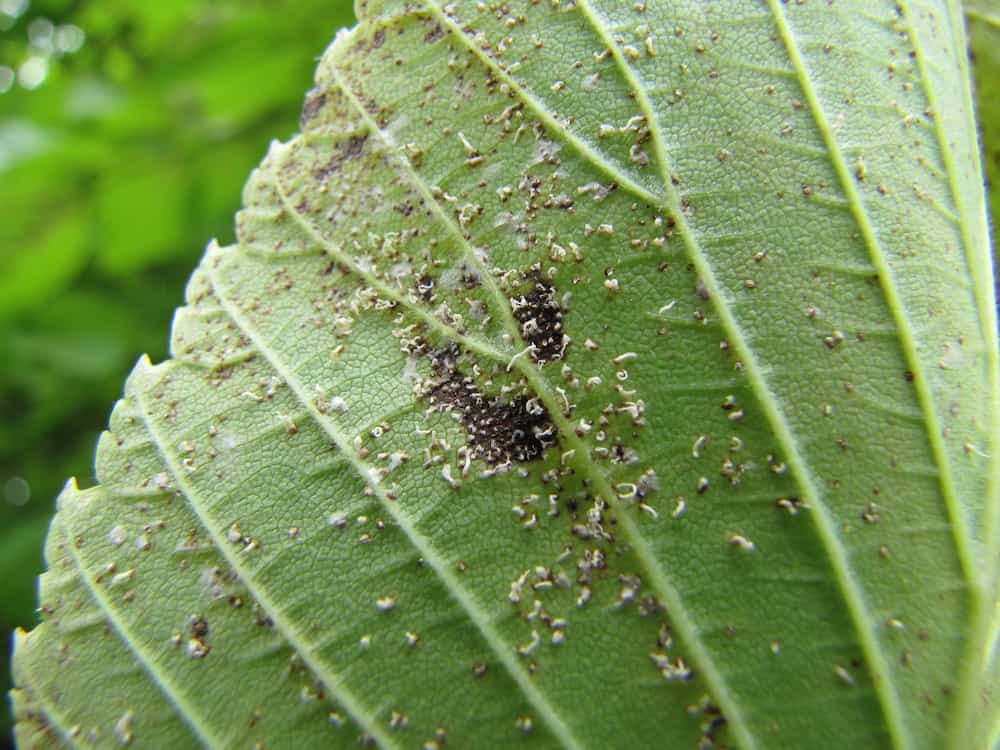 Depending on how the disease is managed and treated, annual crop losses in the United States can range anywhere from less than 1 percent to more than 50 percent.
Depending on how the disease is managed and treated, annual crop losses in the United States can range anywhere from less than 1 percent to more than 50 percent.
- Symptoms
Cercospora arachidicola only infects peanut plants, creating brown lesions on stems, leaves, and petioles. 30 to 50 days after planting, macroscopic symptoms occur on the lower leaves' adaxial surface. Damage can cause defoliation and yield loss. In humid weather, lesions develop silvery, hair-like spores.
- Control
Treating peanut early leaf spot involves: Fungicides such as chlorothalonil, Tebuconazole, and Pyraclostrobin were administered early and every two weeks. Strip-tillage practices can postpone an outbreak by minimizing early infection severity and incidence. Using resistant cultivars is the best strategy to combat pathogens and sustain production. 
groundnut leaf miner
The groundnut leaf miner is a significant problem for groundnut crops. Both the larval and adult stages of the groundnut insect can be harmful to the plant. The adult is a very little moth that is around 6 millimeters in length and has wings that are a brownish-gray color. The larvae tunnel through the leaves and eat the tissue that makes up the leaflet. In the beginning, mines that look like little blisters may be observed on the upper surface of the leaflets. After five or six days within the mine, the larvae emerge and travel in groups to neighboring leaves, where they feed on the webbed surfaces and then pupate. The regions of the leaf that have been mined turn dry. When there is a serious infestation, the entire foliage dries up and takes on the look of being burned. The groundnut leaf miner feeds on crops throughout the wet season as well as after the rainy season has ended. The months of July, August, February, and, March see the highest prevalence of this disease, and losses can range from 25 to 75 percent. Additionally, soybeans are one of its most significant hosts. 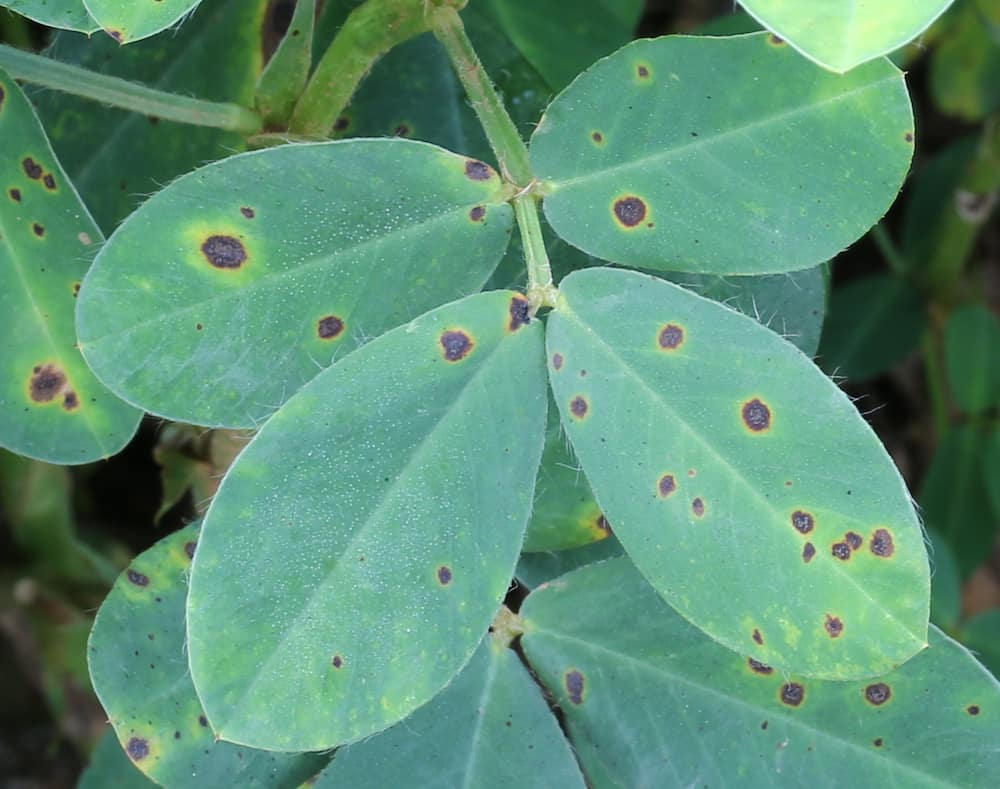 This pest can be handled using cultural control techniques, resistant cultivars, biological control agents, and chemical spraying.
This pest can be handled using cultural control techniques, resistant cultivars, biological control agents, and chemical spraying.
- Mix peanuts with pearl millet and cowpea.
- Crop rotation with maize, cotton, and sorghum. Cotton-sorghum-groundnut gives improved yields and reduces leaf miner.
- Use ICGV 87160 (ICG (FDRS)) and NCAC 17090 for higher yields in leaf miner-prone locations.
- Install light traps to monitor moth numbers at night.
- To reduce leaf miner development, remove lucerne, Amaranthus, berseem, and Indigofera hirsute.
- Always wear protective clothing and follow the pesticide label's dose, administration, and pre-harvest instructions.

groundnut leaf miner's scientific name
A leaf miner is any one of countless kinds of insects that have a larval stage that lives in the leaf tissue of plants and feeds on the tissue of those leaves. Most leaf-mining insects are moths, sawflies (the ancestor of wasps), and flies (Diptera). This is also done by some beetles. Miners feed in the tissues of leaves, avoiding predators and plant defenses by only consuming the thinnest layers of cellulose, similar to woodboring beetles. When they attack an English oak, they also choose to eat the parts of the tree that have less tannin, a chemical that keeps insects away that the tree makes in large amounts. Identification of the insect involved can occasionally be done to a species level by analyzing the feeding tube pattern and leaf layer being mined. Frass, or droppings, are often found in the mine. The pattern of frass deposition, the shape of the mine, and the type of plant the leaf miner is eating can be used to figure out what kind of leaf miner it is and what stage it is in.  Certain mining insects can feed on other plant components, such as fruit or flower petals. It has been hypothesized that certain patterns of leaf variegation may be part of a defense mechanism adopted by plants to fool adult leaf miners into believing that a leaf has already been preyed upon. This would allow the plant to avoid being eaten by adult leaf miners. Leaf miners are considered pests by many farmers and gardeners because they destroy crops and garden plants and are hard to manage with chemical treatments. Spinosad, an organic pesticide, helps reduce leaf miners. Spinosad kills leaf miners when consumed. Seasons may require two or three applications. Spraying when bees or other useful arthropods are present will harm the environment.
Certain mining insects can feed on other plant components, such as fruit or flower petals. It has been hypothesized that certain patterns of leaf variegation may be part of a defense mechanism adopted by plants to fool adult leaf miners into believing that a leaf has already been preyed upon. This would allow the plant to avoid being eaten by adult leaf miners. Leaf miners are considered pests by many farmers and gardeners because they destroy crops and garden plants and are hard to manage with chemical treatments. Spinosad, an organic pesticide, helps reduce leaf miners. Spinosad kills leaf miners when consumed. Seasons may require two or three applications. Spraying when bees or other useful arthropods are present will harm the environment. 
groundnut early leaf spot
Fungi on groundnut leaves cause a disease called Cercospora leaf spot disease. It is a big problem, even though Sierra Leonean farmers have always thought that spots on groundnuts meant they were ready to eat. Most of the time, it's hard for farmers to tell the difference between early leaf spots and late leaf spots of groundnut. Early leaf spot is most often seen as brown spots on the upper side of leaves that are often surrounded by a yellow color. The most common sign of late leaf spots is dark brown spots, usually on the bottom side of affected leaves. It is important to check for late leaf spots because they can be hard to get rid of. Fungi are the things that cause leaf spots to happen. Infected seeds, other hosts, and infected debris are the main ways that the virus spreads. Plants that are sick don't produce as much as healthy plants. 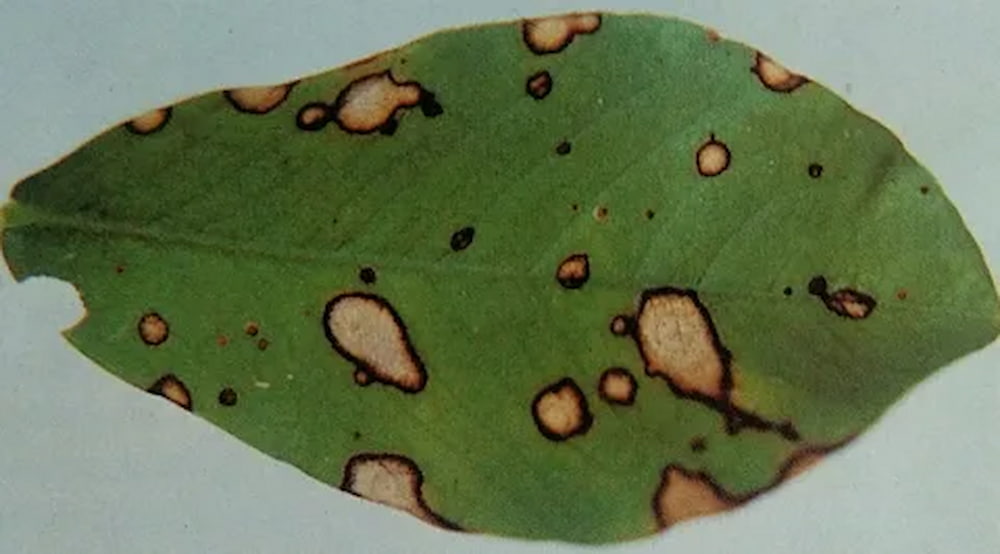 It is hard to get rid of leaf spots on groundnut leaves. These steps can help get rid of the problem:
It is hard to get rid of leaf spots on groundnut leaves. These steps can help get rid of the problem:
- Mix peanut crops with those of maize or sorghum.
- Weeds should be removed between the third and sixth week after planting.
- After harvest, plow and harrow crop remains and soil fungus.
- Mix groundnut crops with those of cowpea and maize.
- To stop the fungus from spreading, take out plants that are badly infected.
- Take off the sick leaves to stop the fungus from spreading further.
- Get rid of diseased debris and don't water too much.
- As a general rule, always wear protective equipment and follow the product label's directions while applying pesticides.
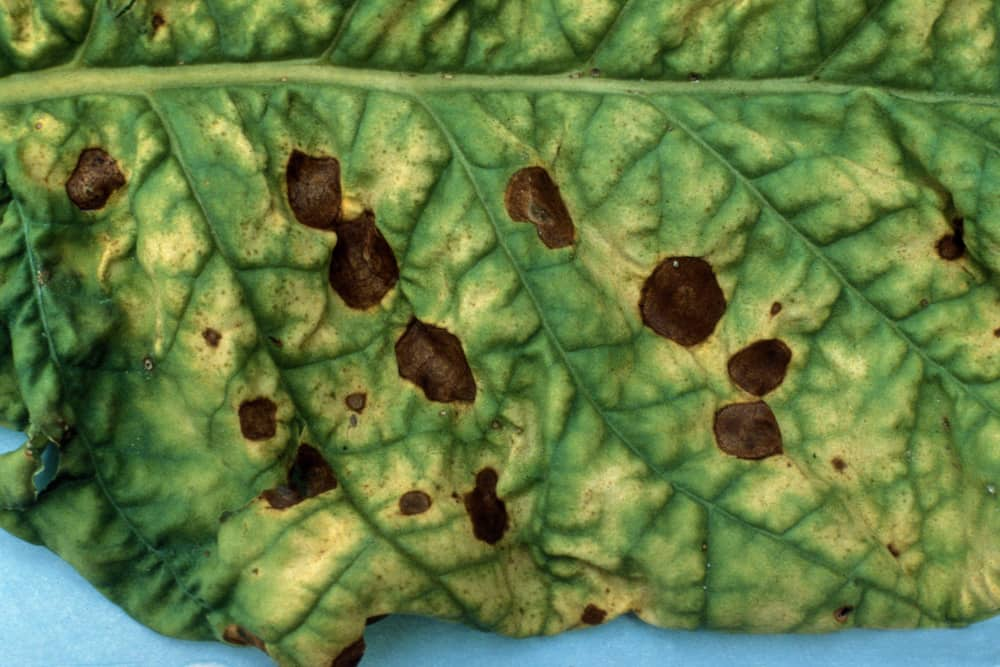
aflatoxin in groundnut
Groundnuts, which are an important crop in Malawi and Zambia for both food and export, are known to have dangerously high amounts of aflatoxins, which are carcinogenic poisons that are extremely hazardous to human health. Groundnuts become contaminated with aflatoxins when they are still growing in the soil and again when farmers try to dry the nuts after harvesting them. The aflatoxins are produced in extremely small levels by a fungus called Aspergillus flavus. Both drought and rain make the problem worse, which is particularly problematic for smallholder farmers who rely on the crop for both their food and their revenue. The groundnuts are typically laid out on the soil where the fungus grows so that they may be dried by the sun. This is typically the only option available to smallholder farmers. The plant is put under additional stress by the drought, which in turn makes it more susceptible to assault by the fungus.  Rainfall during the crop drying time after harvest also helps the creation of optimal climatic conditions for the growth of the fungus. When people ingest things that have not been evaluated, there is a potential threat to the general population's health. Small-scale farmers and low-income consumers in nations with low incomes are particularly vulnerable to the effects of these multifaceted difficulties. Through the project titled "Stemming Aflatoxin pre-and-postharvest waste in the groundnut value chain (VC)", which was established as a part of the PAEPARD program, NRI has been a participant to determine how to improve the pre-and-postharvest management of groundnuts. This endeavor is being carried out as part of the PAEPARD program. The scientific team has received long-term assistance from NRI, which has helped with the design of the research, the publication of the results, and the interpretation of the conclusions to generate policy suggestions.
Rainfall during the crop drying time after harvest also helps the creation of optimal climatic conditions for the growth of the fungus. When people ingest things that have not been evaluated, there is a potential threat to the general population's health. Small-scale farmers and low-income consumers in nations with low incomes are particularly vulnerable to the effects of these multifaceted difficulties. Through the project titled "Stemming Aflatoxin pre-and-postharvest waste in the groundnut value chain (VC)", which was established as a part of the PAEPARD program, NRI has been a participant to determine how to improve the pre-and-postharvest management of groundnuts. This endeavor is being carried out as part of the PAEPARD program. The scientific team has received long-term assistance from NRI, which has helped with the design of the research, the publication of the results, and the interpretation of the conclusions to generate policy suggestions. 
groundnut yellow leaves
As the growing season for peanuts continues, patches of yellow or yellow regions may start to appear in the fields. Peanuts can become yellow for several different causes, including a lack of nitrogen in the soil as a result of improper inoculation or a low pH, or in regions where there has been an excessive amount of moisture. On the other hand, a manganese shortage is frequently to blame for the yellowing that might appear in the later stages of the growing season. As can be seen in the image on the right, interveinal chlorosis, which is brought on by a manganese deficit, causes the leaves to take on a yellowish hue. The yellowing will often only be seen in the upper half of the canopy of time. A manganese deficit may start to manifest itself in regions with a pH that is more than 6.3. When the pH rises over 6.3, the plant may no longer be able to extract the manganese it requires from the soil. Growers can assist alleviate the effects of this deficit by applying foliar manganese to their peanuts. 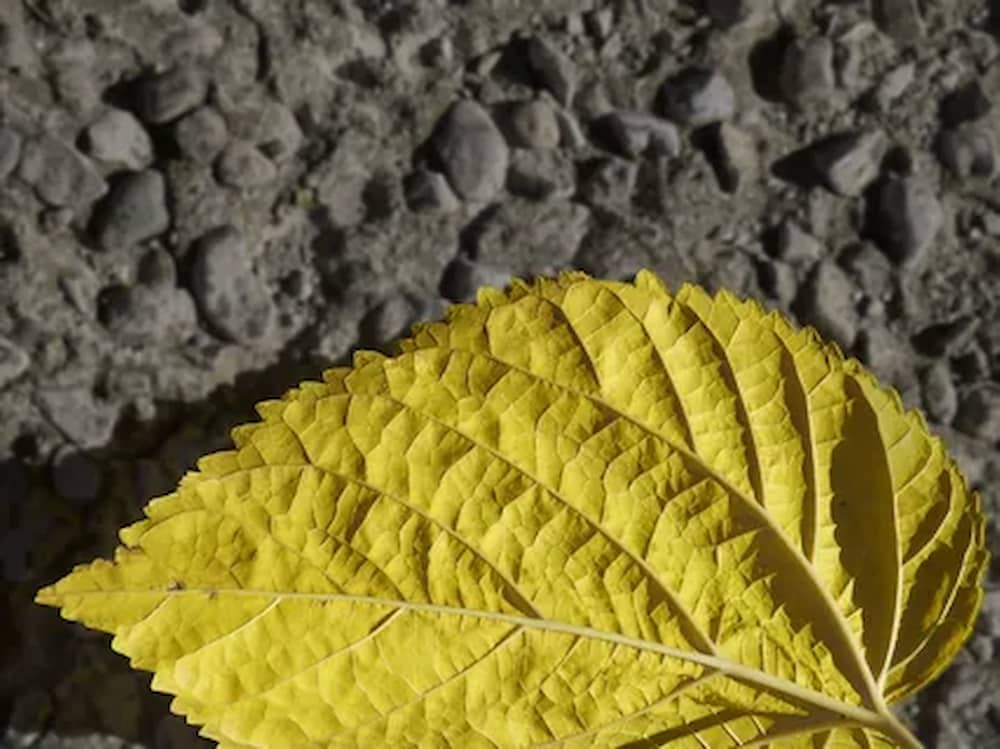 Manganese sulfate and chelated Manganese can be used to provide a spread spray of Manganese to offer producers.15 and.25 lbs. of Manganese per acre, according to the Georgia Plant Analysis Handbook. If the symptoms do not go away after using the spray, you should use it once every two weeks. You may likely need to submit more than one application.
Manganese sulfate and chelated Manganese can be used to provide a spread spray of Manganese to offer producers.15 and.25 lbs. of Manganese per acre, according to the Georgia Plant Analysis Handbook. If the symptoms do not go away after using the spray, you should use it once every two weeks. You may likely need to submit more than one application.
